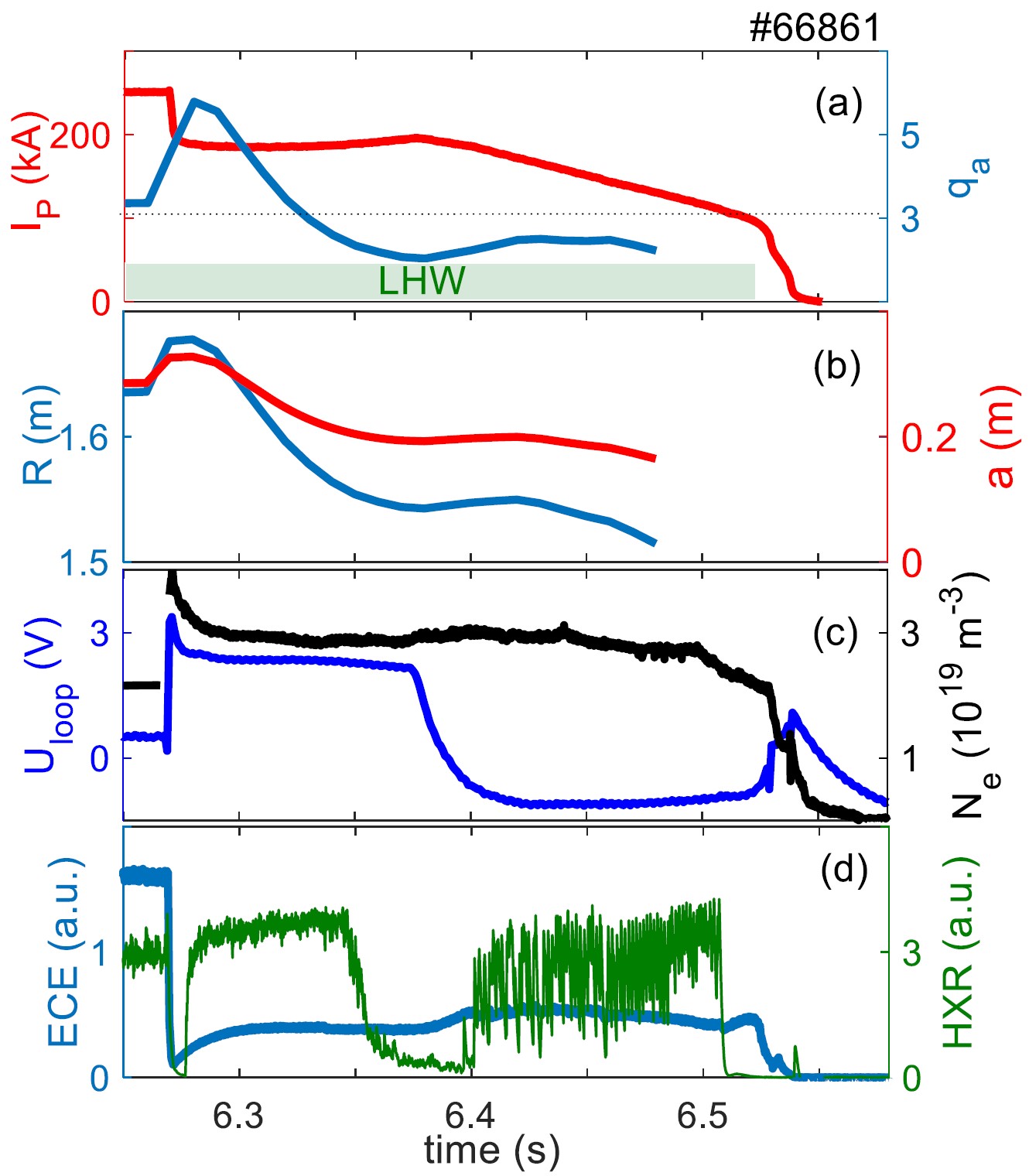
The thermal and magnetic energies stored in the plasma are released in a very short time during the disruption and deposited on the device, which can cause damages to the integrity of plasma-facing components. In CFETR and ITER with high stored energy and large plasma current, damages could be severer.
Recently, a research group from Institute of Plasma Physics (ASIPP), Hefei Institutes of Physical Science (HFIPS), reported a series of new progresses in disruption physics including runaway electron and disruption prediction, which deepened the understanding on EAST disruption.
Researchers studied the general characteristics of disruption halo currents in EAST tokamak with ‘W-Like’ graphite divertor and ‘ITER-Like’ tungsten divertor, which provided with more physics information on the ITER divertor. They found that halo currents decrease with the decrease of vertical displacement, and therefore obtained a lower limit of halo fraction versus TPF (Toroidal Peaking Factor).
They further investigated the runaway electron generation and loss in EAST disruption, aiming at elaborating contribution of wave resonant supra-thermal electrons by lower hybrid waves on runaway seeds, and the effects of MHD instabilities on RE loss are analyzed in detail. Besides, experimentally observation demonstrated two threshold electric fields, characterizing a lower field required for significant seed RE generation and sustainment and a higher field required for the RE avalanche onset in the flattop. These results also open a possibility for RE suppression before the RE avalanche onset.
In another experiment, to classify disruptive discharges and distinguish them from non-disruptive discharges, researchers trained a full convolutional neural network is trained on a large database of experimental EAST data. The true positive rate of the model increases up to 0.875, while the false rate decreases to 0.061. The proposed data-driven predicted model exhibits immense potential for application in long pulse fusion device such as ITER.
They also applied a real-time disruption predictor using a random forest (DPRF) for high-density disruptions to the plasma control system of the EAST tokamak. This new result confirmed the viability of DPRF to trigger the mitigation system, and can be more valuable when its interpretability is preserved to aid physics-based strategies.
The studies serve as solid basis for future development on disruption mitigation and prediction.
The studies were supported by the National Key R&D Program of China, Youth Innovation Promotion Association o Chinese Academy of Science and the National Natural Science Foundation of China.
Link to papers: Real-time prediction of high-density EAST disruptions using random forest
Runaway electron generation and loss in EAST disruptions
Observation of two threshold fields for runaway-electron generation in tokamaks
Disruption prediction using a full convolutional neural network on EAST

Fig. 1 Halo current versus Toroidal Peaking Factor. (Imaged by CHEN Dalong)

Fig. 2 Behaviors of runaway electron during EAST disruption. (Imaged by TANG Tian)

Fig.3 the disruption prediction category implemented in the real-time computer of EAST PCS. (Imaged by HU Wenhui)
Contact:
ZHAO Weiwei
Hefei Institutes of Physical Science (http://english.hf.cas.cn/)
Email: annyzhao@ipp.ac.cn
Real-time prediction of high-density EAST disruptions using random forest
Runaway electron generation and loss in EAST disruptions
Disruption prediction using a full convolutional neural network on EAST
Observation of two threshold fields for runaway-electron generation in tokamaks